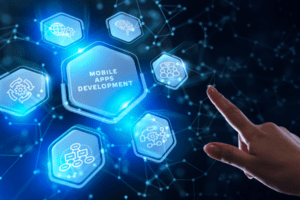In the age of information, data is king. And amidst this treasure trove of data, one form stands out as the most complex and abundant: human language. Every day, we produce and consume massive amounts of text and speech, whether it’s in the form of emails, social media updates, news articles, or conversation. Understanding, processing, and extracting valuable insights from this wealth of linguistic data is where Natural Language Processing (NLP) comes into play.
What is Natural Language Processing?
Natural Language Processing, or NLP, is a fascinating subfield of artificial intelligence (AI) and linguistics that focuses on the interaction between computers and human language. It combines the power of computer science, linguistics, and machine learning to enable machines to understand, interpret, and generate human language in a way that is both meaningful and useful.
At its core, NLP seeks to bridge the gap between human communication and computer understanding. It strives to empower machines to work with language like how humans do, which goes far beyond simple keyword searches or rule-based systems. NLP has evolved from basic language analysis to more advanced, context-aware applications, making it an integral part of modern AI systems.
Key Components of NLP
- Tokenization: Tokenization is the process of breaking down text into smaller units, typically words or phrases, called tokens. This step is crucial as it lays the foundation for all subsequent NLP tasks.
- Text Classification: NLP models are often trained to classify text into different categories or labels. This is commonly used in sentiment analysis, spam detection, and content categorization.
- Named Entity Recognition (NER): NER is the identification of named entities within text, such as names of people, places, organizations, and dates. This is crucial for tasks like information extraction and knowledge graph construction.
- Part-of-Speech Tagging (POS): POS tagging assigns a grammatical category (e.g., noun, verb, adjective) to each word in a sentence, aiding in syntax analysis and language understanding.
- Machine Translation: NLP is also behind the magic of machine translation tools like Google Translate, which can automatically convert text from one language to another.
- Question Answering: NLP models like IBM’s Watson or OpenAI’s GPT-3 are capable of answering questions posed in natural language, drawing from a vast amount of knowledge.
- Speech Recognition: While not limited to written text, NLP encompasses the field of speech recognition, allowing machines to transcribe spoken language into written form.
Challenges in Natural Language Processing
Despite its incredible potential, NLP faces several challenges, including:
- Ambiguity: Human language is rife with ambiguity. Words can have multiple meanings, and context is essential for understanding the intended one.
- Syntax and Semantics: The intricate rules governing sentence structure and word meaning make language processing complex.
- Lack of Data: NLP models often require massive amounts of data to generalize well, and acquiring labeled data can be time-consuming and expensive.
- Bias and Fairness: NLP models can inherit biases present in their training data, leading to unfair or inaccurate results.
Applications of Natural Language Processing
The applications of NLP are virtually limitless, and they continue to expand as technology advances. Some notable applications include:
- Virtual Assistants: Virtual assistants like Apple’s Siri, Amazon’s Alexa, and Google Assistant rely heavily on NLP to understand and respond to user commands.
- Search Engines: Google and other search engines use NLP to provide more accurate and context-aware search results.
- Chatbots and Customer Support: NLP-powered chatbots provide automated customer support and answer user queries in real-time.
- Healthcare: NLP helps process and analyze medical records, aiding in diagnosis and treatment recommendations.
- Finance: NLP is used for sentiment analysis in stock trading and fraud detection in financial transactions.
- Content Generation: NLP models can generate human-like text, making them useful for content creation, such as generating news articles or product descriptions.
Natural Language Processing is a dynamic field that holds the key to unlocking the vast reservoirs of human language data for various applications. Its evolution continues to reshape how we interact with technology and how technology interacts with us. As NLP research advances and data availability increases, we can expect even more exciting breakthroughs and innovations in this field, revolutionizing the way we communicate with machines and, ultimately, with each other.















